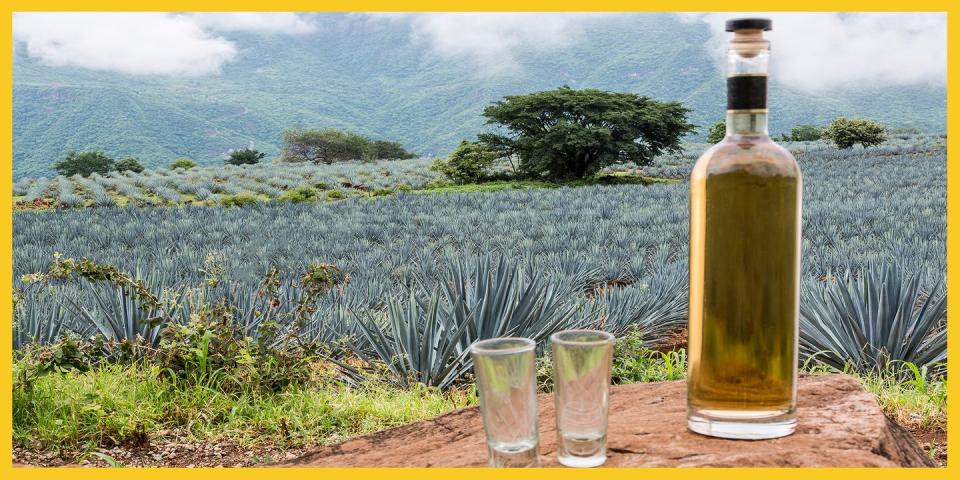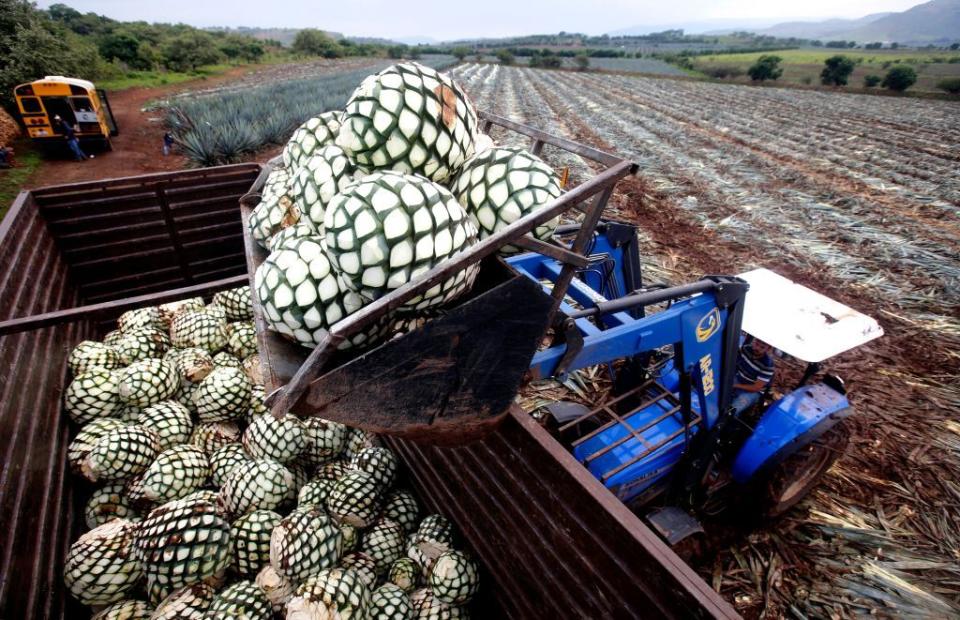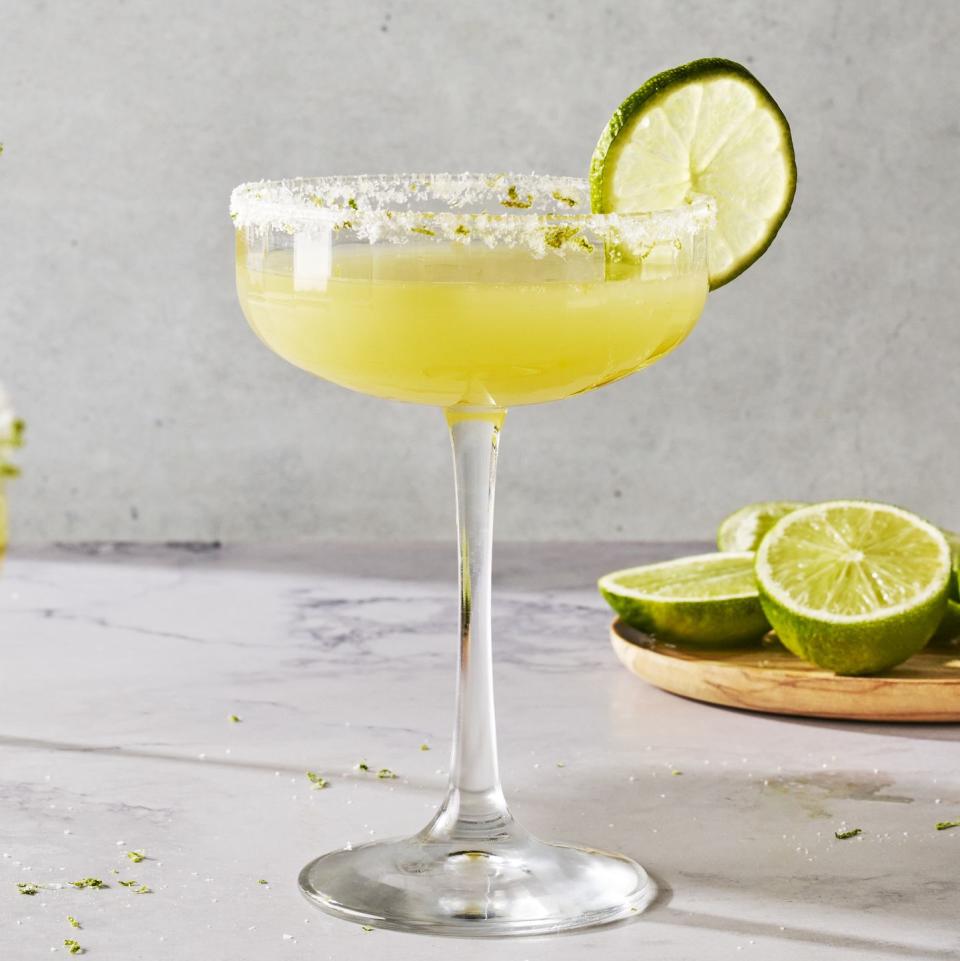All The Types Of Tequila And How To Drink Them

Whether you enjoy drinking a refreshing margarita, throwing back shots, or sipping it straight, tequila is an all-star in any liquor cabinet. And when it comes to buying a bottle, there are countless options. You can find bottles backed by small, family-run distilleries, major beverage brands, and even celebrities.
With a highly saturated market, it can be tricky to find one that's right for you. "Tequila has an amazingly wide range of flavors, from spicy and complex to fruit," writes Joanne Weir, author of Tequila: A Guide to Types, Flights, Cocktails, and Bites. "There's something there for everyone."
Understanding the world of tequila requires learning an entirely new language (and not just Spanish). We're breaking down everything you need to know about the main tequila types.
But first, we need to establish what makes tequila, you know, tequila. The spirit itself is made from the agave plant. By law, tequila must be made with a minimum of 51 percent Weber blue agave. Many top-shelf bottles contain 100 percent blue agave and disclose it on their label. Other brands produce mixto tequila, which contains at least 51 percent agave but is supplemented with other sources of sugars (typically cane sugar, corn syrup, or molasses).
Mixto tequila is often maligned by purists—but that doesn't mean it should be overlooked. It's great to use when you're making a cocktail, looking for a smoother, more mild tequila, or just want to drink on a budget.
Separate from the agave percentage, most tequila types are determined by how long they're aged. Here are the main types and what they mean.

Blanco
Blanco tequila, which is often called silver or plata tequila, is the youngest variety. It can be aged in stainless steel tanks for as long as two months. However, most brands bottle their blanco tequila immediately after distillation.
Because of this, what you end up tasting is very agave-forward. The clear spirit is sharp and peppery with a distinct bite. "Many tequila aficionados prefer blanco over aged tequilas because it captures the floral and vegetal flavors of the agave," says Weir.
The punchy flavor can be a bit overwhelming for those new to tequila, but the spirit especially shines in citrusy cocktails. In most cases, margaritas and palomas are built with a blanco tequila as the base.
Reposado
The word reposado translates to "rested," which refers to the time spent aging after distillation. If you think of blanco as a tequila that pulled an all-nighter, consider reposado as the type of tequila that took a power nap. Reposados can be aged anywhere from two months to a year in either oak barrels or stainless-steel vats.
Most commonly, reposado tequila is aged in oak barrels previously used to age American whiskey. The vessel, along with the time spent aging, imparts a smooth, almost caramel-like flavor and a delicately golden hue. It's one of the most versatile types of tequila—it's complex and enjoyable on its own while still being mild enough to include in cocktails.

Añejo
Añejo in Spanish translates to "old," which is an apt description of this tequila type. To be classified as an añejo, tequila must be aged for a minimum of one year, but can sit in an oak barrel for up to three. Unlike reposado, which doesn't have a size requirement for the barrel, the barrel size for an añejo cannot exceed 600 liters. This allows more of the spirit to interact with the wood and develop a deeper, richer flavor.
This type of tequila has a dark, caramel color and often contains the same notes you'd find in other spirits aged in oak barrels. "Añejo tequila has notes of toasted almonds, butterscotch, and honey," says Weir. Its nuanced taste makes it ideal for sipping, just like you would for a high quality, long-aged whiskey.
Extra Añejo
Even if you don't speak Spanish or are unfamiliar with tequila terms, the definition of extra añejo tequila is fairly simple: it's just like añejo tequila but older. Extra añejos are aged for at least three years in oak barrels that can fit a maximum of 600 liters. The notes are similarly warm and complex to añejo tequila, only they're more pronounced.
The color depends on the distillery, but according to Weir, most bottles of extra añejo are tinted a dark, almost mahogany shade.
Due to all the time and labor required to make extra añejos, they're considered to be some of the most premium tequilas on the market. This is not your average tequila. It definitely doesn't belong in a margarita. If you're willing to splurge on a bottle, this would be a special-occasion sipper.
Cristalino
You've likely seen all of the other types of tequila at your local liquor store, but cristalino is a newer variety you may not have seen before. It's first entered the market in 2011 and isn't legally recognized by the Tequila Regulatory Council. It's an aged tequila that's filtered through charcoal to remove the colors and some of the oaky flavors from the barrel. Don Julio launched the first one.
What you're left with is a clear spirit with the crispness of a blanco and the nuance and smoothness of an aged tequila. It's the newest frontier in the tequila industry and brands are increasingly adding a cristalino to their portfolio—but its trajectory is still to be determined.
What's your favorite type of tequila? Let us know in the comments.
You Might Also Like

 Yahoo Finance
Yahoo Finance 